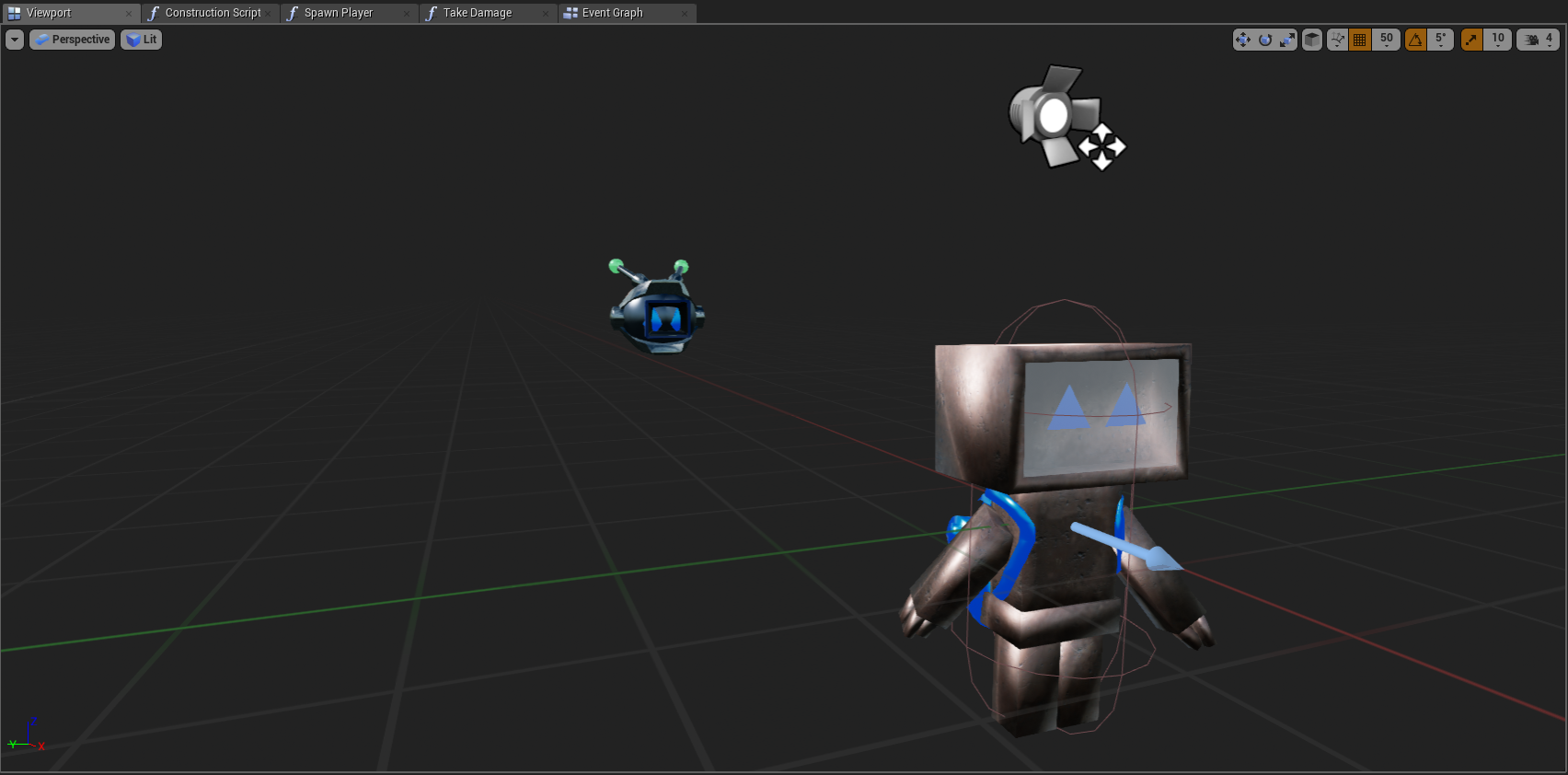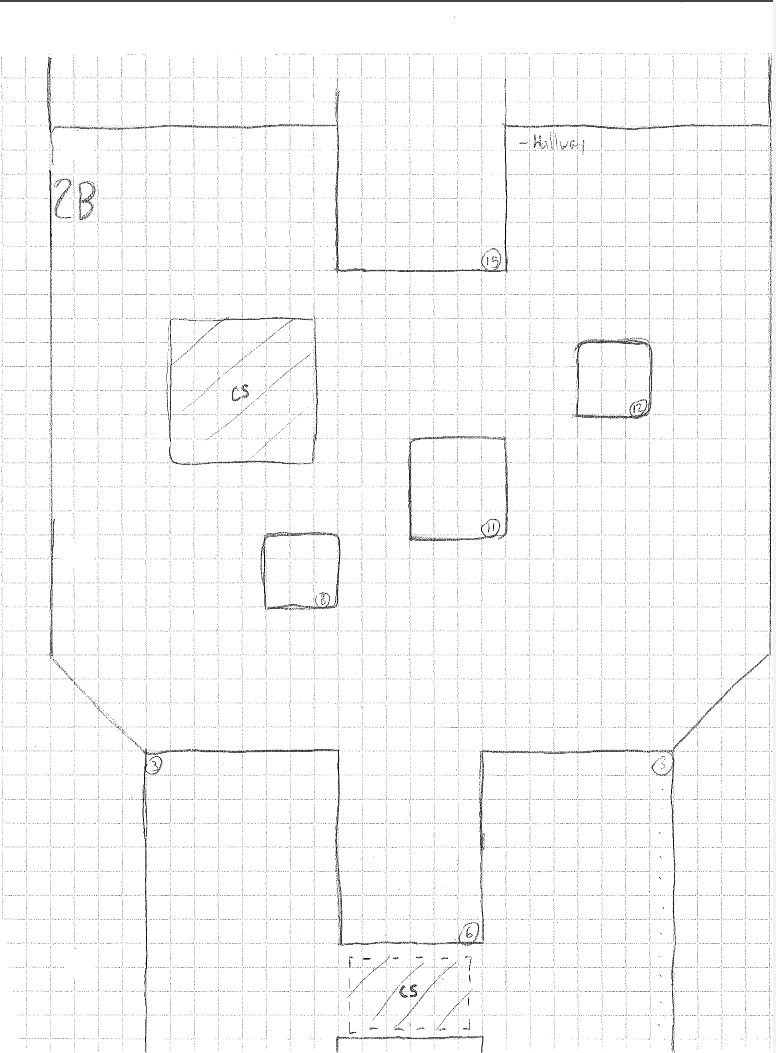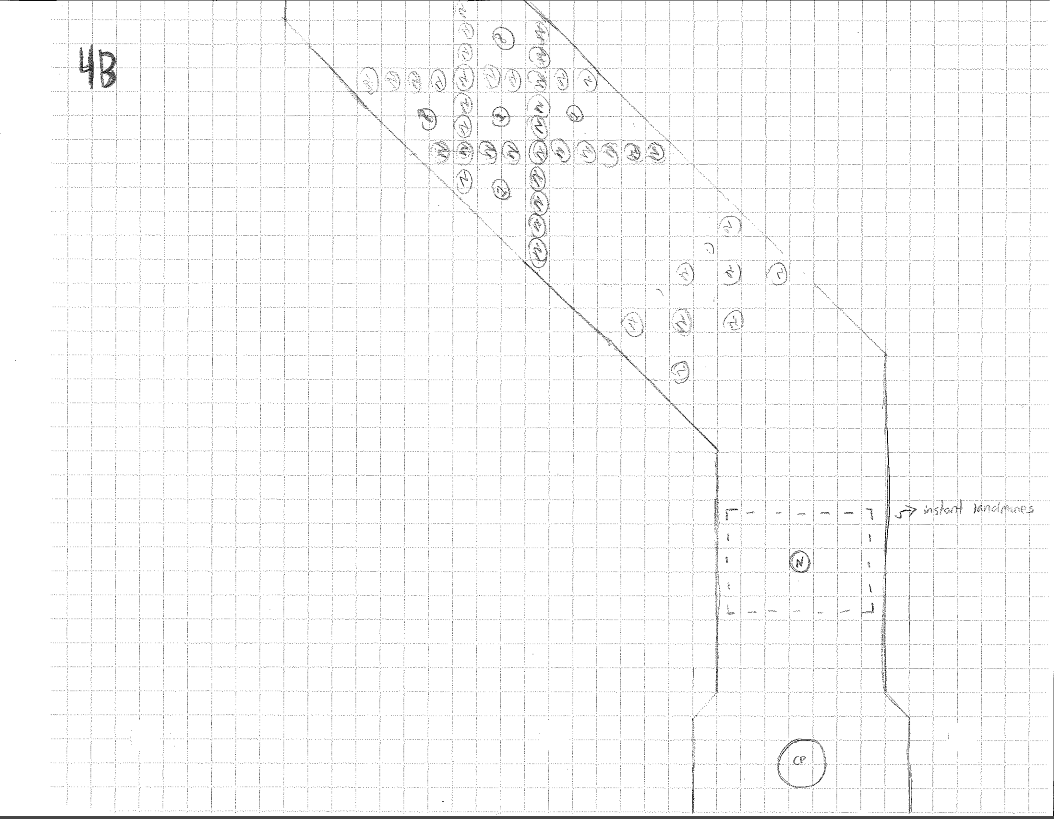BOT (2016-2018)
Biography:
BOT is a 3D adventure platformer which turns the collectible into a resource that players need to manage during gameplay.
Synopsis:
Scope: 4 Levels
Team Size: 5
Development Time: 7 months
Engine Used: Unreal Engine 4
My Contribution:
BOT was designed, scripted and developed solely by me. Character models, animations, and a few in game sound effects were provided by my peers whom are credited in the playable BETA. Click the button above to play the BETA version of BOT.
Development Process:
Beginning Stages:
The game's design process began with my urge to explore and develop levels around a 3D platforming experience. I have designed levels around 2D, 2.5D, top-down, and first-person controller mechanics before, but never for a 3rd person platformer.
This was the first major project that I ever created in Unreal and this entire development process was filled with learning experiences. My first objective was to create and modify around an already simplified 3rd person character controller. Once that was done I would begin exploring the different modifications that could be done using Unreal's blueprint system.
Scripting using unreal blueprints
I spent a total of 4 months solely on the development on the mechanics and controller feel of the game.
I wanted to ensure that players enjoyed playing as BOT and navigating CAM around a space.
A series of different power-ups and systems were also developed to influence the way BOT could be challenged in this world I had created for him.
Design Decisions:
These batteries were designed originally as a collectible and changed into a necessary resource to keep BOT moving at an preferred speed. As the game advances in time, BOT loses his charge.
Originally, I considered that BOT would die if he ran out of batteries, but I did not want players to feel punished for not collecting them, I wanted to entice the player's ability to horde these batteries and reward them for doing so in an effective manner.
This is what brought to life the idea of having different powers that BOT can find that use batteries as a resource.
Another major design decision that I wanted to make early on, was placing the player's in complete control of the camera. I acknowledged that players were growing frustrated with game cameras that attempted to fix themselves in order to aid gameplay experience. I saw that in some cases the camera would be stuck at certain angles or lodged into game geometry. I wanted to not only negate the opportunity for that to happen, but I also wanted to innovate the cameras control into a necessary mechanic.
The ability to dynamically adjust the camera while moving would be a factor of play. While mechanically this was simple to implement, I felt the need to contextualize this a little bit more for the game. Therefore, I decided on making the camera a separate entity called CAM. Not only is this a camera that player's are controlling, but it is an actual character which provides hints and tutorials for the safety of BOT. This can be done completely through the camera's GUI because what the player is seeing is the world through the eyes of CAM.
Not only did this aid in the contextualization my design decisions, but there also lies another nested amount of hidden rewards for players to find. For example there can now be specified locations in maps with reflective panels and if the player looks at them, they can see CAM's reflection. Providing an achievement or cute little audio file that plays when CAM sees himself.
Level Design
The remaining 3 months were spent solely on level design. I took 4 weeks to develop the paper maps for each level. After getting feedback from multiple peers, I would revise and adjust the maps accordingly. This added another 2-3 weeks to the design process of the levels.
Once maps were created, the white-box of each level would begin. The white-boxing process for each level varied, but at least 1 week per level would be necessary for minimal testing to ensue. Once the white box was created, extensive testing of each level would follow suit. A lot of modifications and adjustments were made to each level in order to fit cadence and attempt to place players in a sense of flow.
The following are paper maps followed by a video walkthrough of each level that was designed.
Level 01
Level 02
level 03
LEVEL 04
What's next?
This project taught me an incredible amount regarding game design and level design. As I mentioned before, I intend for BOT to find many more powerups that all use the batteries as a resource for players to balance and manage effectively. I already have the following powers coded and implemented for game play testing: attack, double jump, and power shield. There are now collectible suits that players can find in the game which grant a change to the main character's aesthetic. And yes, I have every intention on having CAM copy BOT's suit dynamically during the game.
For now, the game is currently on hiatus.
Thank you so much for reading my thoughts on this process. Looking forward to creating more!



























